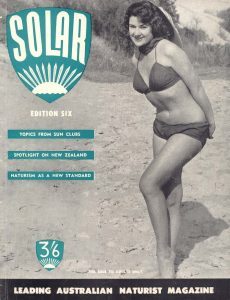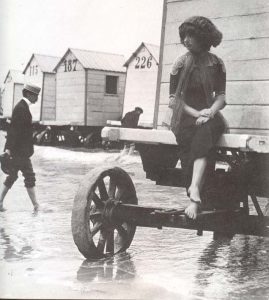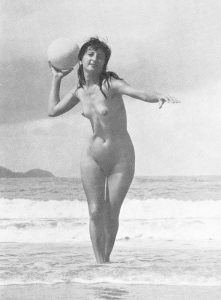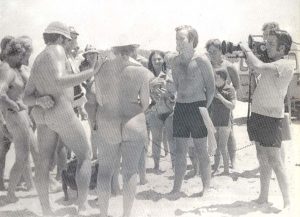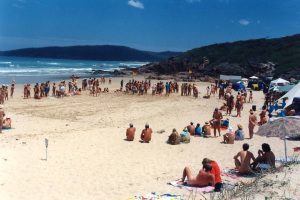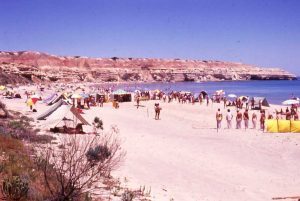When the First Fleet arrived in Botany Bay just over 200 years ago they found the locals, the Aborigines, naked and unashamed, sensibly attired for the warm Australian climate. But those early settlers brought their old English morality with them. It was indecent to be nude. Even at the beginning of the 20th century, the British used horse-drawn bathing boxes to avoid being seen entering the ocean for a swim.
During the early settlement days in Australia, some of the British soldiers apparently found the weather and the white sandy beaches just too tempting, and often went swimming in the surf, in the nude! In 1833, to preserve decency in this newly found colony, the Governor of the day banned sea bathing completely during daylight hours. It was not until 1902, after a lot of civil disobedience and many arrests, that this law was finally revoked. Of course, bathing was a complete cover up in those days, with some of the ladies’ costumes containing up to ten metres of material! Also, bathing was segregated with separate hours or different parts of the beach for men and women. Once again civil disobedience won out and mixed bathing eventually became the norm.
As sea bathing became more and more popular during the 1920s and 30s huge pavilions were built on the more popular beaches. These provided changing and shower rooms, refreshments, and usually had enclosed nude sunbathing areas (separate ones for males and females of course).
The progress of bathing costumes over the years is a story in itself, with each agonising step drawing protests and cries of immorality. In 1907 one lady was arrested for wearing a costume that exposed her arms and feet. Then in 1915 surfboard riding was introduced into Australia, by a teenage girl would you believe! She was labelled a hussy because the legs of her suit had crept up above her knees.
The trend toward freedom continued and by the late1930s it was backless costumes for the ladies and, shock horror, men going topless. After the war the two-piece became popular, and then during the 1960s, the bikini emerged. But again it was not without trauma, many girls being ordered off the beach or arrested because their costumes did not make the bare minimum requirements.
From then on it was a matter of less and less. The bikinis just got smaller and smaller with some rather ingenious methods being used to keep those tiny scraps of material in place. Men’s costumes had also diminished, and the thin, soft material tended to reveal more than it concealed.
During this entire process nude bathing on some of the more remote beaches had always been furtively taking place, but during the late1960s and early 1970s it became quite popular, and more or less condoned by the general public and the authorities. Finally, on the 15th of February 1975, the South Australian Government, under the Premiership of Don Dunstan, declared nude bathing legal on Maslin Beach, making it the first legal ‘dress optional’ beach in Australia.
- A daring two piece costume is featured on the cover of Solar magazine in the 1950s
- Horse drawn English bathing boxes (circa 1900)
- All the genital area had to be air-brushed out of the photographs until 1972
- An ABC TV crew record the first attempt at a legal nude beach at Stockton Beach near Newcastle in 1972. The police closed it down the next day.
- Samurai Beach just near Stockton is now a legal nude beach
- Maslin Beach south of Adelaide was Australia’s first legal nude beach

